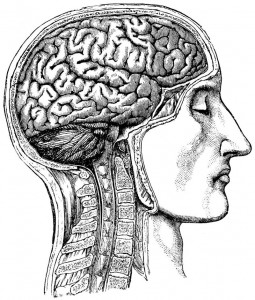About Nasal Septoplasty
By Ashleigh Elkins
Septoplasty is a surgical procedure that aims to straighten the nasal septum. The nasal septum is a structure made of cartilage and bone that divides the nose into left and right halves. It is the third most common procedure performed by an ear, nose and throat surgeon (1). A deviated septum can cause several problems, including a blocked and stuffy nose, nosebleeds, sinus problems and sleep apnoea (2).
Septoplasty is a surgical procedure with a long history. Septoplasty has been documented in ancient Egyptian medical literature, as early as 3500BC (1). Writings exist describing a procedure to treat fractures of the nose, where a grease-coated strut made out of linen was placed in each nostril to hold the septum in place, with rolls of linen placed externally to hold the nose in place2. In Western literature, early treatments for septal deviation were described in 1757, where it was recommended to pinch the septum firmly with the fingers daily to bring about a gradual return of the deviated septum to the midline (3).
In a paper by Adams in 1875 (4), a technique to straighten a broken nose is described. Adams had noted that treating nasal fractures had been neglected largely by the surgical profession, with the belief that treatment would not provide any lasting benefit (4). This was despite lasting physical deformities, breathing difficulties and voice changes.
Adams describes a procedure he performed with patients sedated with chloroform, where he would apply force to straighten the cartilage in the front part of the septum to align it with the back, bony part of the septum. He would then use what he described as a retentive device (figure 1). This was made of steel and would be inserted into the nostrils to support the septum. There was a screw which could be adjusted to hold the device in place whilst applying little to no pressure on the realigned septum. This device was replaced by nasal prongs made of ivory after 3 days, which could be removed and replaced by the patient at their leisure. Adams had also developed an external device to hold a fractured nasal bone in place, which is illustrated in figure 2. These images are from Adams’ original article from 1875.
In 1882, a new approach to treating problems with the septal cartilage was described by Ingals (5). This was termed “window resection”, involving removal of small pieces of cartilage in the septum (3). In 1899, Asch described a different technique, where instead of removing the deviated part of the septum, performing window resection or using Adams’ method of forced straightening, he destroyed the “resiliency” of the septum by making crossing incisions in the septum, minimising loss of tissue whilst returning the septum to the midline (6). However, this technique produced short-lived results and fell out of favour (7).
The next development in the history of septoplasty was the description of submucous resection in the early 1900’s. This is a procedure which is regarded as the foundation of modern techniques, and involves removing sections of the septal cartilage, whilst leaving the overlying tissue intact. The pioneering surgeons ensured the remaining cartilage and bone was in an L-shaped conformation to provide support to the nose (2). A number of variations to the original submucous resection procedure have been described since the early 1900’s.
Currently, new techniques for nasal septoplasty are being developed which involve endoscopy. Endoscopic techniques are becoming more common and are now regarded as a good technique to use for many types of septal deviations (2).
If you have questions about treatment for a blocked nose or nasal septoplasy see your local doctor who will arrange for you to visit an Ear Nose and Throat Specialist.
For more information about septoplasty click here.
References
(1) Haffey, T., Pabon, S., Hawley, K., Hoschar, A., Sindwani, R. Exploring the clinical value and implications of routine pathological examination of septoplasty specimens. The Laryngoscope, 2012; 122:2373-2377
(2) Fettman, N., Sandford, T., Sindwani, R. Surgical management of the deviated septum: Techniques in septoplasty. Otolaryngologic Clinics of North America, 2009; 42(2):241-252
(3) Devaiah, A. K., Keojampa, B. K. Surgery of the Nasal Septum. In Rhinology and Facial Plastic Surgery. Stucker, F. J., de Souza, C., Kenyon, G. S., Lian, T. S., Draf, W., Schick, B. (Eds). 2009.
(4) Adams, W. On the treatment of broken-nose by forcible straightening and mechanical retentive apparatus. The British Medical Journal, 1875; 2(770):421-422
(5) Peacock, M. R. Sub-mucous resection of the nasal septum. The Journal of Laryngology and Otology, 1981;95:341-356
(6) Asch, M. J. Treatment of nasal stenosis due to deflective septa, with or without thickening of convex side. The Laryngoscope, 1899; 6(6):340-343
(7) Flint, P. W., Haughey, B. H., Lund, V. J., Niparko, J. N., Richardson, M. A., Robbins, K. T., Thomas, K. R. Cummings Otolaryngology: Head and Neck Surgery (5th Edition). 2010: Elsevier.
The post Origins of Nasal Septoplasty appeared first on ENT Clinic Sydney.
